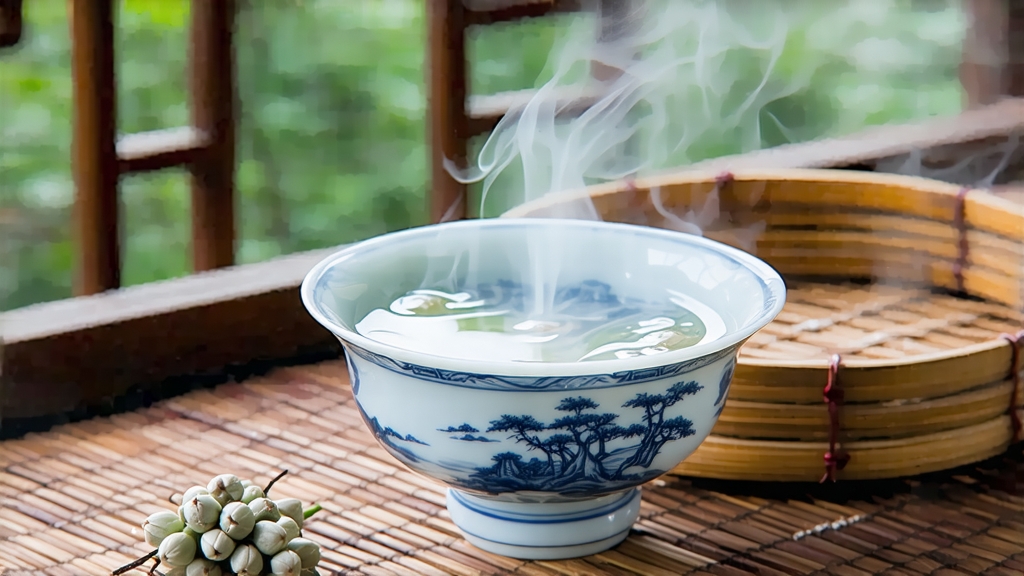
Among the six major families of Chinese tea, white tea is the least theatrical yet the most elusive, and within that quiet clan Silver Needle—Bai Hao Yin Zhen—reigns as the untouched aristocrat. International drinkers often meet white tea through bagged “peony” blends, but the original Silver Needle remains a guarded secret of northeast Fujian’s coastal mountains. This essay invites you to step past the factory gate and into the pine-scented dawn where tea is still handled like snow.
History: from imperial tribute to minimalist icon
Song dynasty court records (960-1279) already list “white down tea” sent from Fujian, yet the name Yin Zhen, “silver needle,” first surfaces in the late Ming. Legends credit a tea-master named Xiao Tian who, fleeing bandits, hid freshly plucked buds inside a charcoal-warmed bamboo tube; the accidental long, slow drying produced a liquor so luminous that local monks presented it to the Wanli Emperor. By the Qing, Silver Needle became a currency of diplomacy—caravans carried it across the Gobi to Saint Petersburg, where Russian nobles believed the pale infusion slowed aging. When British plant hunters stole tea secrets in 1848, they ignored white tea entirely, considering it “too delicate for export”; thus Silver Needle survived the colonial tea boom untouched, preserved in the high mist of Zhenghe and Fuding counties.
Micro-terroirs: two counties, two personalities
European wine lovers understand terroir, yet few realize that Silver Needle possesses two legally protected appellations only thirty kilometres apart. Fuding, granitic and seaside, gives needles that are plumper, silver-green, with a marine note sometimes likened to fresh oyster liquor. Zhenghe, inland and clay-rich, produces slimmer, ash-grey needles carrying orchid and star-anise depth. Purists blind-taste the counties the way Burgundians distinguish Pommard from Volnay. Within each appellation, elevation further refines character: buds gathered at 600–800 m absorb slower spring sunlight, stacking amino acids that translate into a velvety “umami-sweet” finish impossible to replicate below 300 m.
The living raw material: the Da Bai cultivar
All authentic Silver Needle is plucked from the Da Bai (“big white”) tea tree, a genetic sport discovered in 1857. Its buds can reach 3.5 cm, each cloaked in a down so dense it refracts light like frost. A single kilo demands roughly 30 000 buds, all picked before Qingming festival when overnight temperatures still dip to 8 °C, locking in low-temperature aromatics. Pickers work opposite the sun, facing west so that their shadows do not overheat the tender tips; baskets are lined with banana leaves to prevent bruising. Because the bud is the plant’s embryonic shoot, it contains the highest concentration of protective monoterpenes—scientists have measured up to 2.3 % linalool, the compound also found in basil and lavender, explaining Silver Needle’s elusive floral lift.
Craft: the art of doing almost nothing
Once back at the cottage, the buds are spread on bamboo trays called water screens, only one layer deep. No frying, no rolling, no shaking—white tea’s hallmark is “two gentle actions and one patient wait.” First action: withering. For sixteen to thirty-six hours the buds rest in a drafty loft while mountain air, carrying 75 % relative humidity, threads its way between cells. Enzymes nibble at bitter catechins, converting them into softer theaflavins; meanwhile, chlorophyll degrades into pheophytin, shifting colour from jade to champagne. Second action: drying. Traditionally this was done over charcoal embers covered with ash, the temperature held below 40 °C so that down remains un-scorched. Modern producers often use electric ovens, yet the finest lots are still finished under moonlight—trays are placed on rooftops from 2 a.m. to sunrise, allowing dew to re-hydrate the surface while the core slowly desiccates, a technique known as “reviving fragrance.” The result is moisture content of 4–5 % and a leaf that can age for decades, developing honeyed complexity like white Burgundy.
Aging: the white tea time-machine
Unlike green tea that fades within a year, Silver Needle is the only Chinese tea officially permitted to carry a vintage date